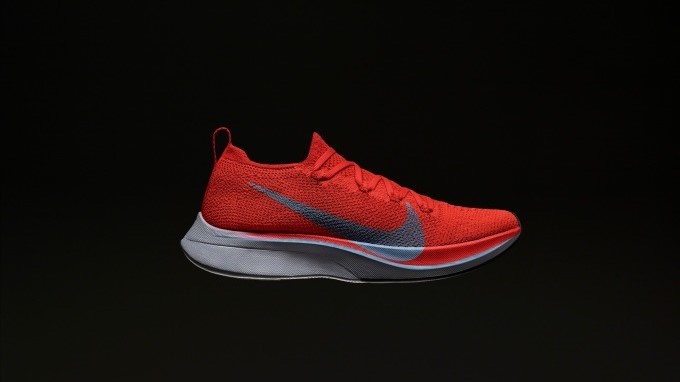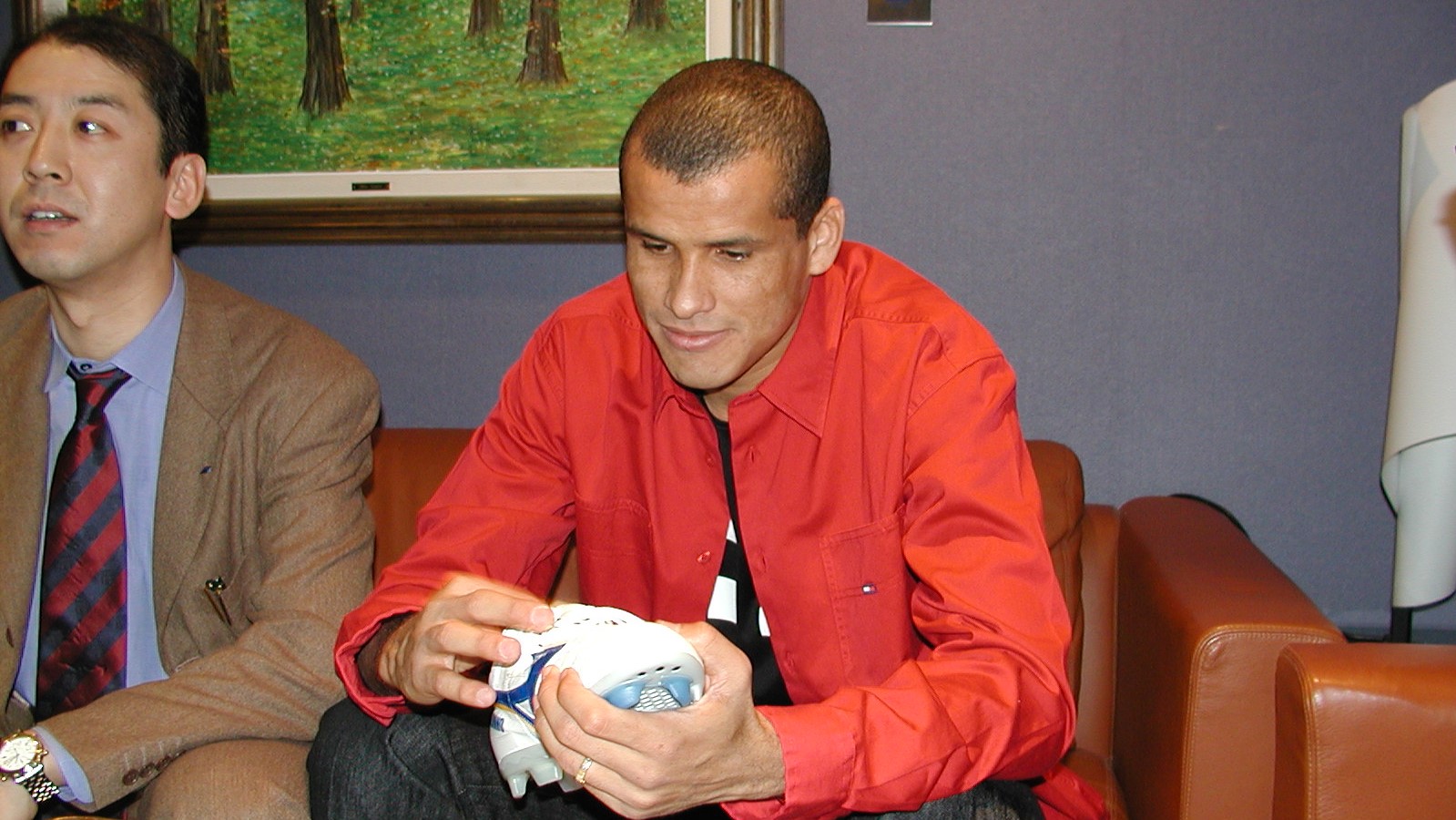
King Gear founder Tatsuhito Kaneko x Vintage spike collector Hiroaki Konishi talks about “PUMA spikes made in West Germany” (final story)
Mr. Kaneko wearing a PUMA vintage spike and Mr. Konishi who brought the spike. The two talked about PUMA's spikes enthusiastically.
Vol.1 talks about "PUMA spikes made in West Germany"
Vol.2 talks about “PUMA spikes made in West Germany”
Vol.2 talks about “PUMA spikes made in West Germany”
Konishi: It was only the world in the magazine.

Kaneko: That's right. I have never seen it actually in Japan.
Wow, what is the feeder?
Konishi: I have it for the time being, but I think that was until the mid-90s.
Kaneko: What is the overseas model at that time?
Konishi: In the 90's, kings will be completely different. It's brainwashed by West Germany, so I don't think I want it too much for Germany.
Kaneko: No, isn't it better to be a germany?
Konishi: (90 years) PUMA has been making Germanies for a short period, and since then it is rare because it is made in other countries (such as Eastern Europe).

(Note 1) The four on the right are PUMA spikes from West Germany to Germany. Perhaps there is no two-toe-to-leather model, like the left end, and a toe-one leather with a unique curved stitch similar to the feeder. The soles are slightly different, but Mr. Konishi will introduce more details later.
By the way, I think Kaneko-san's shoes today are quite rare. Where did you buy them?
Kaneko: (When I was in Europe) I went to Herzogenaurach, Germany, if I had time.

The best part is that (Bolcia) Menchen Grandbach will return to PUMA from Lot (and then Kappa). Because this team is the origin of my Puma.
No, it ’s amazing. Are you being cared for?
Konishi: It's not so much because the number has increased. Just a little mink oil.
Kaneko: How many feet are there?
Konishi: I wonder if there are 100 pairs of spikes (I'm writing a column and it's still increasing ...).
Kaneko: Wow.
Konishi: Well, not just PUMA, but recently there is a habit of collecting it if it is made in West Germany (the reason is mentioned in episode 4), so that area has increased considerably.
After Kaneko wears all the spikes, it becomes a more enthusiastic story and a book about “Swedish football spikes loved by God”.
Kaneko: That book really has historical significance.
Konishi:Thank you. Well, since it was originally an old story, I wonder if it will go away (more).
Kaneko: Why didn't you make the title as easy to understand as “Love Puma”?
Konishi: As you know, the title of the book (if you don't get permission) should not give proper names. At first it was "Maradona's spike", but since it was rejected, it became a safe name. “God” was n’t something I thought of myself, but it ’s a name like a suggestion from a publisher (Note 2).
Kaneko: It's a title that the editor is aiming too much and doesn't go where it is aimed.
Konishi: No, (this title name) is really awkward, but it feels like it can't be helped (laughs).
Kaneko: “PUMA LOVE” or something, you picked it up right away at a bookstore.Mr. Konishi, please write in King Gear from now on.
Konishi:Yes! Thank you very much.
Kaneko: I want you to write and become an authority to collect old models.
Konishi: No, there is a rise in the world, so if I can do it.
Kaneko:Yes. It may be up, but we don't know.
Konishi: West GermanyMadeI'm only familiar with the model, but I'd appreciate it if I'm fine. Kaneko: I really want to nurture this genre.

(Note 2) Although it was said that it was quite difficult to publish a self-published book, it was possible to interact with many people after publication. When reprinting, Kaneko is going to ask Mr. Kaneko for a recommendation for the band.
(The story continued, but I would like to conclude with a deep god story at the end.)
Kaneko: I put it in the soccer digest because of (Genka Toto).
Konishi: There is a blue book of Maradona (Note 3). That was something like a bible. I wanted to put it in my book, but I can't copy it from my work.
Kaneko: I haven't been interviewed for a minute. Konishi: Oh, is that so? The photo of that book was around 1987, but Maradona painted PUMA black.

(Note 3) A famous book by Yoichi Togashi who was a pioneer of overseas soccer journalists. It is very regrettable that it became a posthumous work. Perhaps it was the only Japanese who was able to interview closely with the god of the climax. I don't think that soccer will improve after reading this book, but the unique sense of God is written everywhere. Most of the photo gods wear black SPA King.
Kaneko: When you were in Sevilla, it was Adidas.
Konishi: There was also a time of Lumbard(Please refer here.http://king-gear.com/articles/918)。
Kaneko: 87, 8 years, it was a contract with Coffee Nova, where Mizuno would have contacted (Note 4).

(Note 4) CM for god appearance in Japan. Puma (left). Nova (right). On the left, he wears the Maradona Super that he has in hand and shows the overhead, and on the right, the photograph was taken overseas around the 1986 World Cup and seems to have been wearing a belt meister or Maradona Pro 1.
Konishi: When I filmed overseas, I wear something close to Belt Meister. In fact, in the Fuji Xerox CM, it seemed that when Paramehiko appeared shortly before, he appeared in a slightly different white shoe tongue (note 5).
Kaneko:Wow! I didn't know that at all.

(Note 5) A photograph of Fuji Xerox's CM is in the photo book “Shakick” by photographer Koji Imai. It's amazing that God's bare feet (also left) are reflected (unless you worship ...). Although only a part of the spike at this time is shown, there is “DESIGN PUMA…” in Shutan and it looks like Paramehiko. But the toe part seems different.
Konishi: In 2005, there was the Maradona Museum in Naples, and the ones on the display are probably the model at that time. I think it ’s only me watching…
Kaneko: No, please give me the king gear story (Note 6).

(Note 6) The spike below Note 5 seems to be a model called Conga released around 1987 (upper left). I don't know if I brought it home after shooting Xerox, but I used it for training (right) and exhibited it at the museum (bottom left). As with Paramexico, there is a white point on the heel, but the structure of the toe and heel is different from Paramexico.
Konishi: (Holding Paramehiko signed by Mr. Shishido) Around this time (in the late 80's), it was mainly worn in West Germany, but here is the most obvious (difference from Japan) Yeah. I think this was white, so I probably used a Japanese-made model called Conga at the time of Ceria A. (Note 7)
Kaneko: Eh!
Konishi: Perhaps (when shooting in Japan) I thought this was good and I imagined it was also worn in Italy.

(Note 7) Even in the Naples period, he wears a spike with a white one point on his heel (left). Around 1991, he seemed to have used a paramexico-like spike during training (right).
Kaneko: Mr. Konishi is more amazing than PUMA JAPAN.
Konishi: No, it seems that there are not many spikes left.
Kaneko: Hey. huh. It's an impression. I'm happy. What is SPA KING? And it ’s white.When this happens, I'm going to want a vice-biler model and a Fox model.
Konishi: PUMA JAPAN has a Fox model. It was fixed and the sole deteriorated, and after peeling off, it was in a state of being replaced (see here)http://king-gear.com/articles/835)
Kaneko: Mr. Konishi, I have a deadline.
Konishi: Oh, yes, can you give me a signature (on the book)? Kaneko: Well, a sign?

Kaneko:Thank you. I look forward to working with you at KING GEAR.
Konishi:Thank you very much. Thank you again.
-Finally, Mr. Konishi, who finished the dialogue-
Thank you very much for the opportunity to introduce me to the gears of famous players from the past. I hope that many people will know about the old classic spikes. (End)

Others
|
2018/12/13
"Yoko Nakano" What is the reason why the world record holders of the full marathon age group continue to run?
Others
|
2018/12/08
Mizuno baseball ambassador contract player interviews "I want to do my best with Mizuno products"

Others
|
2018/12/07
Interview with Daigo Ejima (Para Swimming) Part 1 “The most frustrating to lose to yourself”

Others
|
2018/11/30


